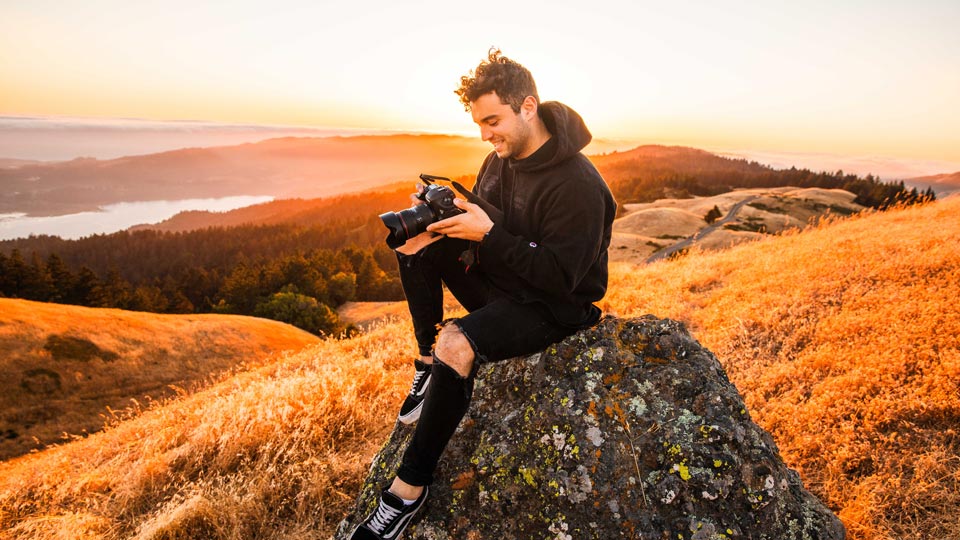Digital communication arts
New media represents the ever-evolving nature of how we use technology in society and our everyday communications. And when you earn your digital communication arts bachelor’s degree online from Oregon State University, you’ll experience a little bit of everything in the new media world — including content creation, media management, new media visualization, applied media aesthetics, social media strategies and beyond.
This program aims to turn you into an industry leader by focusing on critical thinking, analytical skills and creative expression. Study the role new media plays in society, and learn how to implement industry standards and trends through content creation, the application of media theory, and the exploration of the storytelling capacity of contemporary media and technologies.
Skills you’ll gain in OSU’s online digital communication arts degree program
As a student in Oregon State’s online digital communication arts degree program, you’ll gain the in-demand skills you need to stand out in the job market and level up your career. You’ll learn from expert Oregon State faculty who have real-world industry experience.
- Viral content creation
- Social media strategy
- Media entrepreneurship
- Photography
- Stage design
- Recording techniques
- Writing
Program details
The online coursework in Oregon State’s digital communication arts bachelor’s program will help you develop practical skills through hands-on learning experiences that introduce current and projected future trends in the new media industry. This will prepare you to succeed professionally as the media landscape continues to evolve.
The online digital communication arts program is offered by Oregon State’s College of Liberal arts.
Degree requirements
A minimum of 180 quarter credits — at least 60 of which must be upper-division credits — are required to graduate with your degree in digital communication arts, including:
- OSU’s Core Education
- B.A. or B.S. requirements
- College of Liberal Arts Core (for all majors in OSU’s College of Liberal Arts)
- Major requirements: Digital communication arts

Additional program features
Transfer credits
Some degree requirements may be transferred from other institutions. Please note that a minimum of 45 credits of the last 75 credits in this degree program must be completed at Oregon State (online or on campus) to meet the academic residency requirement.
Previously earned credits must be reviewed upon admittance to OSU for appropriate articulation. Additional information about transferring credits is available through OSU’s Transfer Credit Central.
Pursue an honors degree online
As an undergraduate degree-seeking student, you can apply to earn an honors degree online in your academic major. Earning this prestigious degree gives you the opportunity to collaborate with faculty on research, complete a comprehensive thesis experience and engage in co-curricular activities.
Explore certificates and microcredentials
You can gain highly specialized skills that are in demand by employers — and do it with less of a time and financial commitment — when you earn a certificate or microcredential online with Oregon State. Choose from a large collection of short-form offerings that can help you upskill quickly.
Digital communication arts careers
The knowledge you acquire in Oregon State’s online digital communication arts degree program will help you fill in-demand jobs in the global marketplace. As a leader in this area, you’ll enter the workforce ready to provide insights in the many industries that need new media experts.
Job market outlook
Use the interactive tool on this page to discover employment trends, top occupations and salary details for professionals who have skills related to digital communication arts. Please be aware that completing a program related to the job market information shown here does not guarantee employment or a specific salary.
Request
information
To ensure that you receive emails from us, please add "ecampus@oregonstate.edu" and these domains to your safe senders list: “@oregonstate.edu,” “@discover.oregonstate.edu” and “@email.oregonstate.edu.”
† All mobile information you share will remain confidential and will never be given to external sources. Any costs associated with receiving a text message are the responsibility of the individual receiving the message. Opting in to this mobile text messaging service from Ecampus is free of charge, however, message and data rates may apply from your wireless carrier.
Contact
Our enrollment services team can help answer questions about online learning at Oregon State Ecampus and how to get started.
8 a.m-4 p.m. PT Monday-Friday
Contact Ecampus or book an appointment
To ensure that you receive emails from us, please add "ecampus@oregonstate.edu" and these domains to your safe senders list: “@oregonstate.edu,” “@discover.oregonstate.edu” and “@email.oregonstate.edu.”





